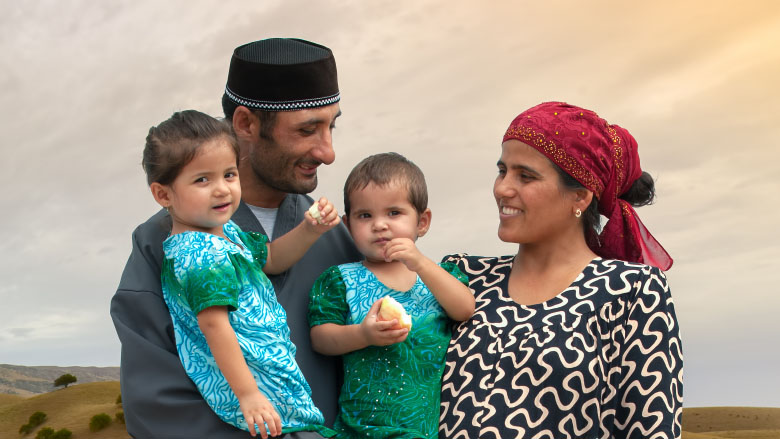Tajikistan has the youngest and fastest growing population in in the Europe and Central Asia region, with 29 births per 1,000 people in 2016. Children under six years old comprise 17 percent of Tajikistan’s population, while roughly one of every three people is under 15 years of age.
Early Childhood Development (ECD) investments are some of the most cost-effective interventions countries can take, helping to eliminate extreme poverty, boost shared prosperity, and build the workforce of tomorrow. Given the demographic context, Tajikistan can benefit more than other countries by building its human capital and empowering its workforce of the future through ECD investments.
However, according to the World Bank’s Human Capital Index (HCI), a child born in Tajikistan today will be 50 percent as productive when she grows up as she could be if she enjoyed access to high-quality health services and 14 years of complete formal education. Tajikistan’s HCI score of 0.50 is significantly lower than average for the region, reflecting that much more can be done to support children achieve their full potential.
Globally, missing opportunities to support child development has been associated with a substantial reduction in adult education, of 26 percent on average, which dampens economic growth. The impact of stunting alone is estimated to be 7 percent of GDP, and this only constitutes one area of development delay. Given the high economic and social returns quality ECD investments can produce, interventions to improve child health, access and quality of education, and cognitive and psychosocial development are vital to reap the benefits of Tajikistan’s demographic shift and sustain growth through a productive workforce that can respond to an everchanging global economy.
The “Advancing Early Childhood Development in Tajikistan” study is intended to support policy makers in understanding the key features of a comprehensive ECD program based on a rapid review of international experiences: 14 programs across 10 countries. The goal of any ECD program is to develop integrated systems that can monitor and support the development of a child from birth to adulthood, ensuring that children and their families can access the services they need to thrive. This two-part study discusses the key features of ECD programs and outlines implementation challenges and solutions so that policy makers are better positioned to make key choices and design effective ECD programs—allowing for today’s investments in Tajikistan’s young population to have greater impact and better position the country’s future workforce to compete effectively in the global economy.

